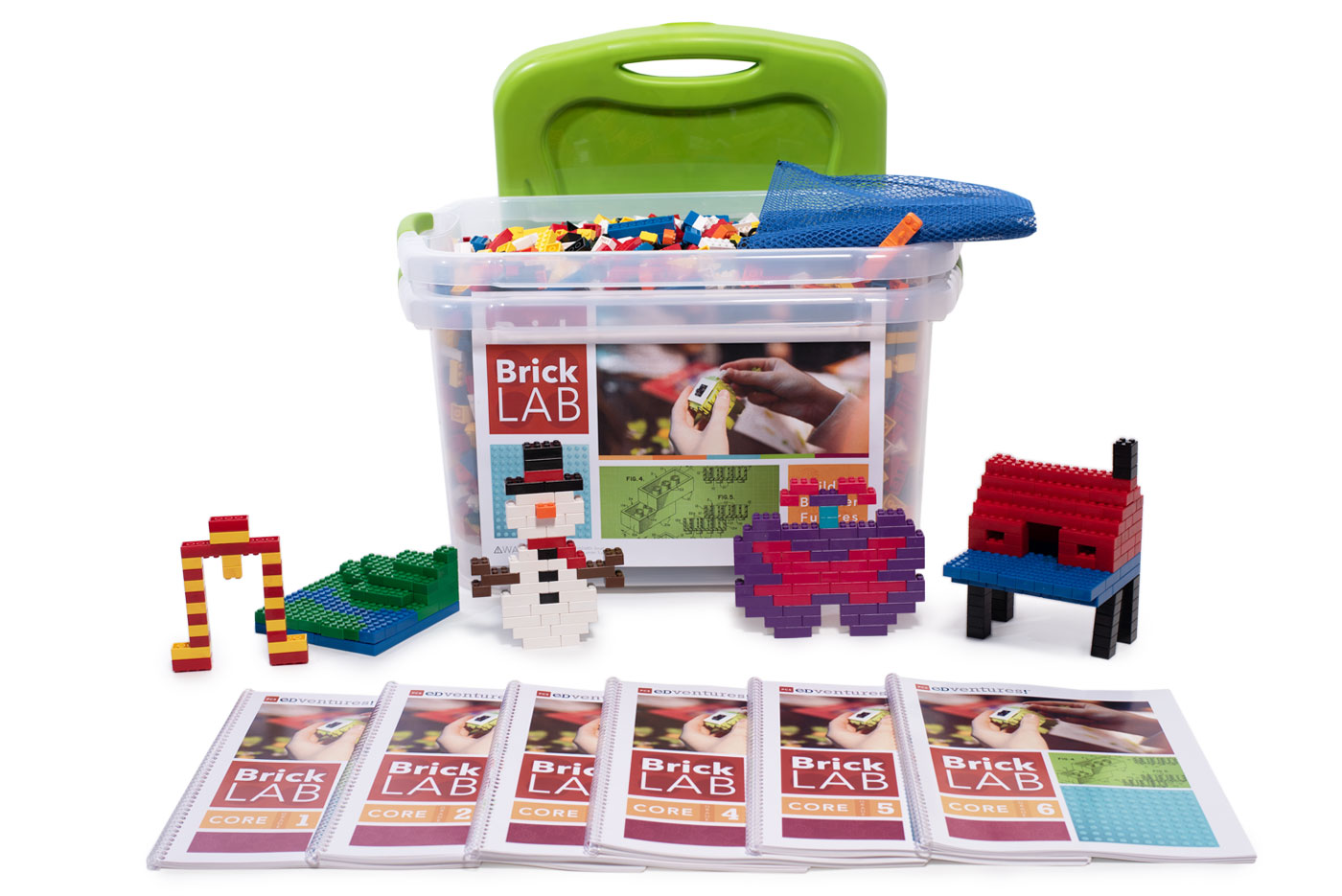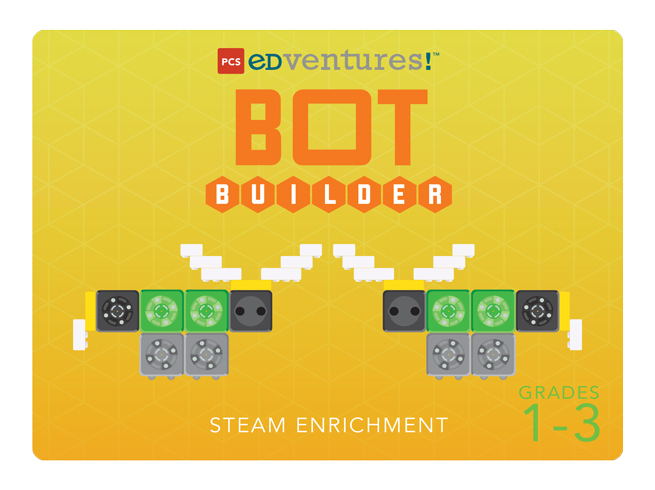
Revamp Classroom Management with STEM
Tired of classroom chaos? It’s never too late to revamp your management style. STEM is your key to getting started.
STEM instruction creates a supportive, organized environment for learners to grow and succeed, making it a powerful tool for establishing a strong classroom community.
PCS Edventures’ complete programs are the perfect way to assign structured tasks that allow creativity to flourish. As learners engage in hands-on activities, they benefit from various management strategies that go hand in hand with STEM.
Through hands-on STEM activities, educators ignite students' passion for learning, creating a dynamic classroom that buzzes with engagement.
5 Ways STEM Leads to
Outstanding Classroom Management
1. STEM Promotes a Supportive Environment
One of the most common issues in classroom management is student behavior. To effectively tackle this problem, educators must identify the root cause of misbehavior. They often discover that learners feel isolated and apprehensive about making a mistake, fearing that it will further distance them from their peers.
STEM instruction’s collaborative approach fosters a strong community that empowers learners to take risks and support each other.
Design challenges are a great place to start! As they puzzle out solutions, learners quickly realize that mistakes are unavoidable. These low-stakes, problem-solving activities establish a supportive environment that welcomes failure in pursuit of discovery.
How can educators encourage learners to support each other?
- Model celebrating mistakes. They're an opportunity to grow and learn!
- Champion the different skills each learner brings to the group.
- Check in with groups often.
- Consistently provide constructive feedback.
Checking in with each design team gives educators the chance to provide authentic feedback. True growth occurs when learners can revise their work immediately based on meaningful comments (Sobel 2014). Using this management technique, learners can explain their thought processes to peers and make proactive changes with the support of an educator.
Have you heard of Iterative Discovery?
STEM programs like Cubelets BOT Builder and our BrickLAB collection use the iterative design process to motivate learners to keep improving and reworking their solutions. In time, they’ll be willing to try new strategies and take more academic risks.
2. STEM Strengthens Relationships
You've created a supportive environment where learners support and uplift one another. Now it's time to help strengthen the bonds between them.
STEM activities create authentic, teachable moments for collaboration and communication.
When tackling complex STEM challenges, it’s crucial to think creatively and come up with unique solutions. The best ideas often stem from collaboration and teamwork. By combining skills, knowledge and perspectives, learners can generate innovative ideas that would not have been possible on their own.
Frequent participation in collaborative experiences gives learners the best chance to become resilient group members. Here are just a few ways PCS Edventures’ programs use student grouping to boost teamwork skills.

Many BrickLAB programs use “Learner Build Groups” for each lesson to suggest the team size recommended for success. Teams can be pre-selected or chosen from a grab bag of bricks. Learners who choose the same size and color become teammates.

Cubelets BOT Builder includes the option of assigning rotating roles within the groups to help learners stay on task and reduce disruptions. Learners will love taking on the role of Prototype Designer, Initial Operator or Supply Specialist, just to name a few!
Be sure to use these tried-and-true Student Grouping Strategies to Maximize Engagement to help learners recognize their worth as valued team members. It can do wonders for their self-confidence and motivation to learn.
3. STEM Increases Learner Involvement
Keeping learners on task doesn’t have to be a struggle. With manipulative-based activities that put the power to make connections and discoveries in learners’ hands, achieving class-wide participation and focus is easy.
BrickLAB programs like Famous Architecture take hands-on learning to new heights. After analyzing the structure of the Empire State Building, teams use PCS Edventures’ signature “Perfect Bricks” to develop prototypes that mimic real-world architectural planning. They design structures to withstand wind and earthquakes and see just how important such considerations are when developing skyscrapers.
Such manipulative-based activities engage learners in immersive activities that connect the curriculum to real-world scenarios.
4. STEM Fosters Self-Directed Learning
STEM challenges are an invitation to explore, question and create. This puts learners in the driver's seat, giving educators the chance to take on a more facilitative role. They become the mentors and cheerleaders that push learners’ thinking beyond the boundaries of a typical lesson.
Boost your confidence and skills! Let's explore proven strategies for managing self-directed learning in STEM classrooms and unlocking student potential.
-
Learners want to further explore something they’ve learned.
Empower them with scaffolded resources that meet their needs. While learners may find their own resources, guiding them to use graphic organizers or online readability tools, for example, can reduce learners’ frustration and possible misbehavior. -
A group is disagreeing while the educator is working with another group.
Model problem-solving strategies groups can use to work through disagreements without adult intervention. - Rock-Paper-Scissors
- Making compromises
- Alternating who gets the final say
-
Every group has their own manipulatives!
Give each group a master list of materials and let them unleash their imaginations!
Cubelets BOT Builder uses an application-based approach in which learners can navigate through captivating design challenges. At the start of each BOT Builder challenge, learners receive their build cards. Each card features simple bot images and labels making it easy for young learners to complete without direct instruction. This autonomy allows educators to facilitate the learning process.
Easy-to-follow educator guides are available in every PCS program, but learners should always be encouraged to explore their own ideas. Take time to discover and encourage their interests, strengths and motivations. This can boost creativity and critical thinking skills while helping them develop a sense of ownership over their learning process.
5. STEM Creates a Simplified Workflow for Reaching Learning Goals
With so much to teach in so little time, you might feel that cramming lessons into each hour is your only option. This is overwhelming for many learners, creating a mess of management issues. Instead, STEM lessons are purposeful and curriculum-aligned, making the most of educators’ and learners’ limited time together.
STEM programs integrate several learning goals.
- Common Core State Standards (CCSS)
- Next Generation Science Standards (NGSS)
- 21st Century Skills
- Habits of Mind
Cross-curricular activities are a staple of STEM instruction.Just one hands-on lesson immerses learners in activities that draw from standards across multiple subjects. What’s more, lesson extensions provide additional opportunities to explore a concept’s connection to many different subjects.
STEM empowers learners to think critically, solve problems creatively and leave their mark on the world. Watch their confidence soar as they explore their potential.
Management Tips for Success in STEM
STEM instruction creates a supportive environment for learners to work together and achieve new goals. Best of all, a class engaged in meaningful, hands-on activities leaves little room for misbehavior.
Check out these resources for more tips to revamp your classroom management with STEM:
- Freebie: Create Flexible Learning Opportunities: Student Choice Survey
- Blog: Create Flexible Learning Opportunities
- Blog: 5 Ways STEM Connects to Holistic Learning
- Blog: Empowering Learners with STEM
- Freebie: A NoteWorthy Anecdotal Records Kit: A Valuable Tool for Educators
How has STEM helped improve your classroom management?
Share your ideas by leaving a comment below!

Author: Jessica Ventre
An experienced elementary educator and science instructional coach, Jessica’s passion for STEM instruction and student-led learning is always at the forefront of her lessons and professional development workshops.








